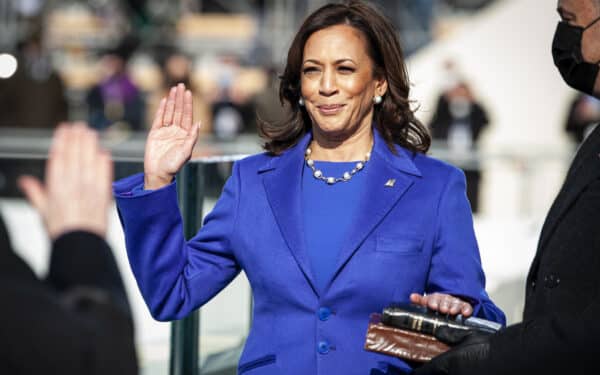I have never made a secret of the fact that I am not a great fan of the round ball game although it would take a particularly small-minded and churlish individual not to admit that the World Cup final match between Argentina and France was a brilliantly exciting affair and one which delivered everything a sports fan might have been hoping for. The ones who should know are saying that it was the greatest ever final and they might well be right. It was a game neither side deserved to lose and within the 120 minutes of play neither did. Alas, it was Argentina which walked away, or should that be waltzed off, with the trophy. The French were dejected but I must also congratulate them for the huge measure of good grace which they displayed in defeat.
One of the pundits on the BBC was a former Argentine footballer whose name meant nothing to me – doesn’t make him a bad person – and who assured his colleagues in the studio that the party in Buenos Aires and around the country would be going on for several days. I’m sure it will but what that might do to help holders of Argentinian sovereign bonds to ever get their money back from a country which is financially way beyond bankrupt and living on fumes escapes me. The last thing the Argentinian economy needs at this point in time is for all the staff to fail to show up to work for three or four days. Pat the Argentinians on the back, look for the feel-good factor and then sell into it.
This will be my last column of 2022 and it is the time when I should be reviewing my best and worst calls of the year while at the same time pitching my forecasts for what might lie ahead of us in 2023.
I can happily report that other than expecting sterling to fall closer to US$ 1.00 when it was at about US$ 1.12 when it is now US$ 1.22, I have not had many bad calls. And the reason for that is that I have not made many calls at all. One of the few I did make was in January and into early February when I suggested that the Russian sabre rattling along the Ukrainian border would not end in an actual invasion. From that moment onwards I have strenuously avoided making big predictions, other than perhaps that the Fed “pivot” brigade was probably smoking something for the possession of which I would be arrested and charged.
Two of my key beliefs have firstly been that trying to fight global inflation trends with parochial monetary policy is an exercise in futility and secondly, that the much-vaunted 2% inflation target is meaningless and a random number which has in the shifting sands of geo-political and globalised trade relations lost whatever dubious pertinence it might once have had. These are two tenets of my thinking which I will carry over the year end and which will be just as relevant on 1 January as they will have been on 31 December.
One of my gang at school in Lucerne in Switzerland was a chap called Rolf Schellenbaum. He went off to study dentistry in Lausanne and I lost touch with him. Anyhow, there was one year-end when he decided he’d had a good year, and that he had no intention of leaving it behind. He thus declared January 1st to be December 32nd and if my memory serves me he went on dating his work through to December 65th or something along those lines. Year-end is an accounting exercise which brings with it a scad of technical effects on asset prices, mainly driven by falling market liquidity at a time when institutional investors are busily executing the last of their index adjustments and banks are completing their year-end window dressing. All the while, the underlying economic realities don’t change with the calendar. Thus, whatever uncertainties have been plaguing us for the past few months are not of a sudden going to find themselves resolved. There will be no Hercule Poirot whose little grey cells will find a way of putting all the pieces together or a Perry Mason who will find a way of turning the table and revealing a previously hidden truth.
The year 2023 will in all likelihood be as confused and as confusing as was 2022. Ukraine’s high command is predicting the Russians taking a second swipe at Kyiv and many of the strategic mistakes which had been made this year by an over-confident Russian military leadership will in all likelihood not be repeated. From the burning down of Moscow in 1812 to the total destruction of Aleppo in 2016 by way of watching hundreds of thousands of its own citizen die of starvation during the siege of Leningrad or the ruthless flattening of Grozny, Russian leaders have again and again shown that they will shy no cost in the pursuit of their aims. The lives of its own soldiers are as cheap as are those of its enemies, military or civilian. The future, let alone the outcome, of the Ukraine war remains in the stars and with it the shape of future geopolitics. To try to make a committal forecast as to what the global economy will look like three, six or twelve months hence is therefore in truth a bit of a mugs’ game.
What is predictable though, and there is no need to hold a masters degree in advanced econometrics to work this one out, is that inflationary pressures are on the wane. And once we have got through February, twelve months after the initial impact of the Ukraine shock, the base effect of many of the highly inflationary price rises in both food and energy will begin to drop out. None of this will have anything to do with restrictive monetary policy but will be entirely thanks to the calendar and to the way in which year over year inflation is calculated. And as I had remarked as early as March, even if inflation falls, it does not mean that prices will have done so too. Meanwhile, the difference between the development of inflation indices and the actual cost of living will continue to vex. The poorer you are, the more immediate the impact of the rise in the cost of fuel and food. Highfalutin central bank policy documents and inflation studies mean nothing to those who sit at home cold and hungry. I read that to the most underprivileged, the inflation rate this year has in some corners been as high as 80%.
Moving on, will 2023 bring the defenestration of Elon Musk? Not that 2022 hasn’t seen him rise to the heights of replacing Jeff Bezos as the world’s richest man, only to lose that crown last week to Barnard Arnault. Bezos was dethroned by his divorce, Musk by his own hubris. Is his love of asking Twitter users for their opinions about to trip him up? Indeed, his question as to whether he should step down of CEO of the company seems to be shaping up as a resounding “Yes”. His Teflon coating looks to be peeling off. Along with the fall of Sam Bankman-Fried and the increasingly vacuous pronouncements of Cathy Wood, the word of disruptors is looking tired. Disruption and displacement are not the same thing and 2023 might well shape up to be the year in which good old fundamentals, for too long hidden behind a wall of cheap money and get-rich-quick-by-trading-from-home hype, begin to regain validity.
At the same time, his first entry advantage in the EV market is beginning to be eroded as the big car makers are seeing their own investment in the sector begin to bear fruit. Tesla’s persistently poor build quality – an endemic feature of many American cars – is now no longer being glazed over by technological leadership. A development to keep an eye on.
Over the years I have had a number of friends and acquaintances who have taken day trading courses and who have believed that they could make a tidy living from looking at tick charts and hopping in and out for a certain end of day profit. The question as to why their instructors, if it were all that easy, were instructing rather than doing it themselves from a Caribbean beach never seems to have crossed their minds. Even when it was easy, it wasn’t easy which sort of tells us everything we need to know, especially if markets are going to remain volatile and hard to read.
Risk asset markets’ obsession with the “pivot” has me worried. They would appear to believe that when the Fed and its peers “pivot”, that the happy times will be rolling in again. That a slowing, ending and possible reversing of the current monetary policy tightening cycle will most probably be brought on by a recession with falling demand, shrinking earnings and imploding profitability along with all the concomitant nastiness and pain seems to have escaped them. Mr Inflation will not be brought to heel by central banks but surely, if at all, by Mr Recession. I’m not sure I want to know what it will take for inflation to fall back to 2%. There is no, and will be no “Deus ex machina” or “apò mēkhanês theós” to give it its proper Greek name. There will be no sudden appearance as if by magic of an all-encompassing solution which will see stocks rise, default risk wane and the Fed produce the monetary policy equivalent of the Higg’s Boson or the “god particle”.
There will be a time to go “risk on” but I do not think that this is now or in the immediate future. It might, nevertheless, be before the end of 2023 although I wouldn’t be inclined to bet the house on it being so. That said, I once again listened to my dear friend Morris Sachs’s latest Inside Baseball with Old Chestnut podcast in which he laconically observed that he too is an old bond dog and that bond dogs are instinctive bears. We love recessions because they cause interest rates to fall and therefore for the price of bonds to rise. We are not good with recoveries. We see all the potential pitfalls, expect the sky to imminently fall on our heads and are therefore dreadful in trading equities.
Since time immemorial and generally until the introduction of unconventional monetary policy measures in the aftermath of the GFC, bonds and stocks have to a greater or lesser extent traded in opposite directions. Experienced operators – call that old if you prefer – have watched them trade in lockstep for the past few years and have wondered when it would be that “normal service” would be resumed. What’s good for bonds is bad for equities. What’s good for equities is bad for bonds. As central banks begin to normalise monetary policy and when positive real returns across the entire yield curve begin to look vaguely more likely, then that will again be the case. There will, however, remain an entire generation of investment bankers, investment managers and wealth managers who have never actually seen that dynamic at work. Their having to learn anew what to an older generation was meat and drink will add to the problems which markets will have to begin to overcome in the coming year.
Should we go into the New Year crying “Buy, buy!” or “Bye bye”? That will henceforth be a matter of opinion and of asset class. No more shooting fish in a barrel which has been provided by the Fed, the Bank of England and the ECB. 2022 has offered an object lesson in uncertainty and market participants would be well advised to get their head around uncertainty becoming the default position. If Russia were to turn the tables on Ukraine and were to launch a possibly successful second assault on Kyiv, then we could be dealing with a very different and possibly even more volatile world than the one we have lived through in 2022. Experience has taught me that, irrespective of how tricky last year was, it always seems to have been so much easier than the current one. I suspect and fear that that might be more fact than perception for next year compared to this one.
Investment portfolio aside, this had been a good year for me. In June, I got married to my better three quarters and in the autumn, I found my columns being selectively picked up by the most excellent online news magazine Reaction. My annual charity appeal was, with the help of my readership, a great success and I have pre-selected the beneficiary of the 2023 version which I shall be launching some time before Easter. Between now and then, we have Christmas, New Year and, in mid-January, I will be departing for a month on my annual pilgrimage to my little island in the sun.
Alas, in this case it is now that time of the year and all that remains is for me to wish you and yours a happy and peaceful Christmas, Hanukkah or Yule and, irrespective, all the very best of wishes for safe and prosperous New Year. In the past and at this point I would have thanked all my clients for it was they who had over the past year ultimately assured me of my salary and bonus. That is of course no longer the case for, with exception of two or three small but kind corporate sponsors, I do what I do at no charge and most certainly not to individual readers. But there will be the chance to stand up and be counted when in a few months’ time I present the begging bowl for my charitable cause.
As far as 2022 is concerned, that’s it. Over and out.
Write to us with your comments to be considered for publication at letters@reaction.life





